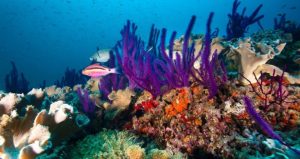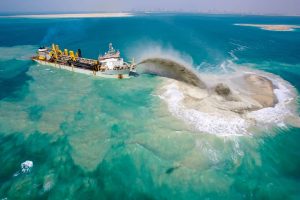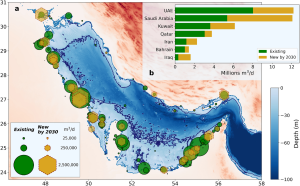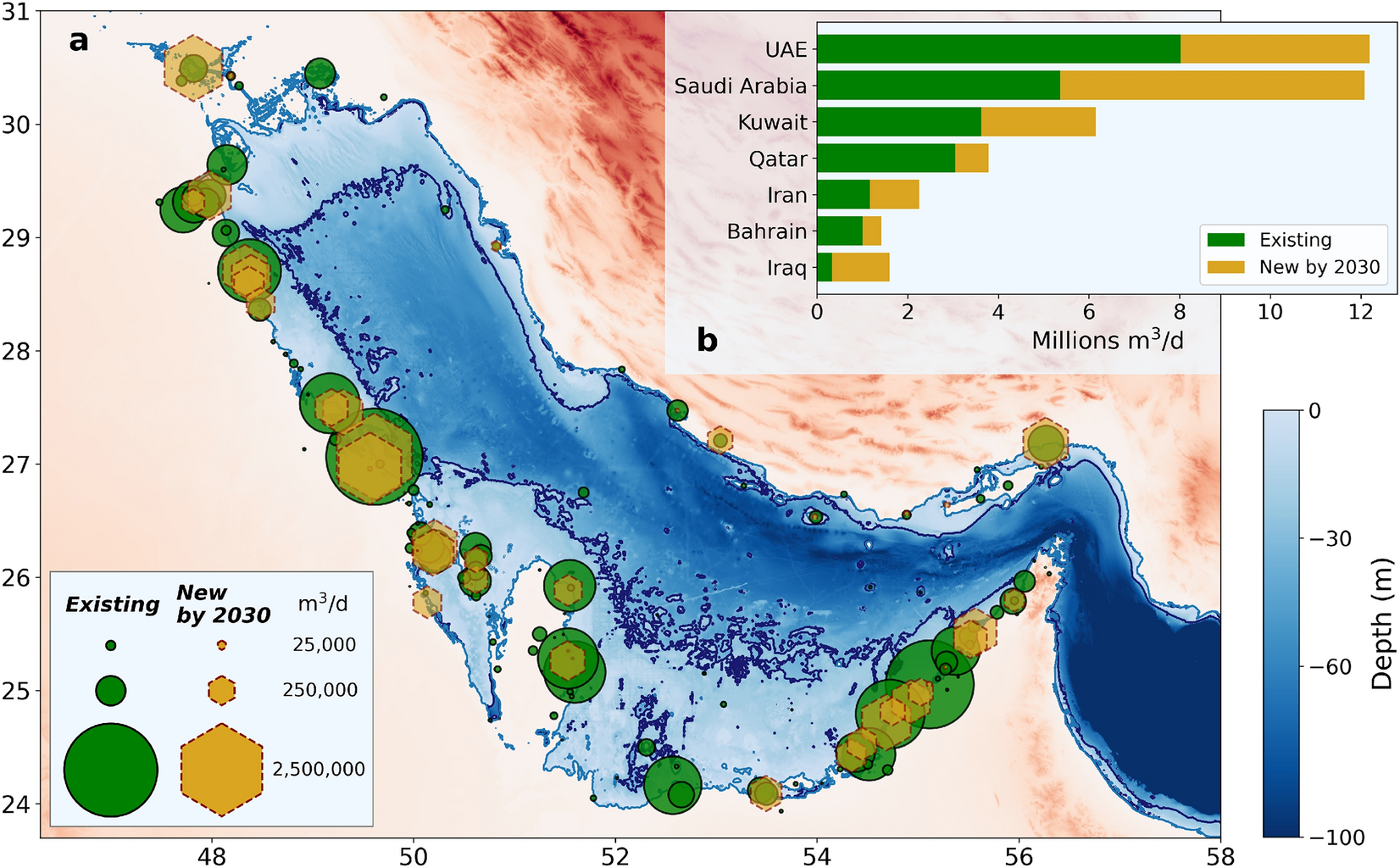The Persian Gulf, a semi-enclosed body of water located between Iran and the Arabian Peninsula, is characterized by its unique marine ecosystems shaped by extreme environmental conditions. These include high salinity levels, significant temperature fluctuations, and limited freshwater input, creating a habitat that supports a diverse array of marine life despite its harsh conditions.
Physical Characteristics
The Persian Gulf measures approximately 1,000 kilometers in length and varies between 200 to 300 kilometers in width, with an average depth of around 35 meters. The region experiences substantial evaporation rates, leading to salinity levels that often exceed 40 practical salinity units (PSU), significantly higher than those found in open ocean conditions1. The shallow depths and high temperatures—often exceeding 35°C in summer—further contribute to the unique marine environment.
Biodiversity and Key Habitats
The Persian Gulf is home to over 150 species of sharks, rays, and chimaeras, contributing to its rich biodiversity. However, the overall biodiversity is lower compared to other tropical regions due to its extreme environmental conditions2. Notably, the Gulf serves as a living laboratory for studying the impacts of climate change on marine ecosystems, showcasing how marine communities adapt to rising temperatures and changing ocean chemistry2.
Key habitats are :
- Intertidal Zones:
- The Gulf features extensive intertidal regions that host diverse communities of invertebrates. These areas are crucial for nutrient cycling and serve as feeding grounds for various bird species1.
- Mangroves:
- Dominated by Avicennia marina, mangroves play a vital role in coastal protection and serve as nursery habitats for many marine species. They cover approximately 130 km² across the region, with most located in Iran1.
- Seagrass Beds:
- Coral Reefs:

Threats to the Ecosystem of the Persian Gulf
The Persian Gulf’s marine ecosystems face a multitude of threats primarily stemming from human activities. These pressures not only degrade water quality and biodiversity but also compromise the overall health of this vital marine environment.
1- Pollution
Pollution is one of the most significant threats to the Persian Gulf’s marine life. The region experiences extensive land-based pollution from industrial activities, urban runoff, and oil spills. The Gulf is a major hub for oil production and transportation, making it particularly vulnerable to oil pollution, which can have devastating effects on marine organisms, disrupting reproductive systems and contaminating the food chain13. Additionally, chemical effluents and plastic waste further exacerbate the degradation of water quality, leading to harmful algal blooms and hypoxia—conditions that can create “dead zones” where marine life cannot survive4.
2- Coastal Development
Rapid urbanization in countries bordering the Persian Gulf has led to significant habitat destruction and fragmentation. The construction of artificial islands, particularly by the UAE, has altered coastal ecosystems, impacting critical habitats such as mangroves and seagrass beds5. These developments not only reduce available breeding grounds for fish and other marine species but also disrupt the ecological balance essential for sustaining biodiversity. The loss of these habitats diminishes the resilience of marine ecosystems against environmental changes.

3- Oil Extraction
The extraction of oil in the Persian Gulf poses numerous risks to marine life. Oil spills from drilling activities threaten both immediate and long-term ecological health. The toxic components of oil can harm a wide range of marine organisms, from plankton to larger fish species, disrupting entire food webs24. Furthermore, the associated infrastructure increases vessel traffic, which contributes to pollution and habitat disturbance.
4- Climate Change
Rising sea temperatures and ocean acidification due to climate change are critical challenges facing the Persian Gulf’s marine ecosystems. The Gulf is experiencing temperature increases at a rate higher than many other regions, leading to coral bleaching events that threaten coral reefs—vital habitats for numerous marine species36. Additionally, ocean acidification impacts organisms with calcium carbonate structures, such as corals and shellfish, further destabilizing these ecosystems.
5- Water Desalination Practices
Countries like the UAE, Qatar, and Saudi Arabia heavily rely on desalination for their freshwater supply. This process not only requires significant energy but also results in large quantities of brine—a byproduct that is often discharged back into the Gulf at high salinity levels. This discharge can disrupt local marine ecosystems by altering salinity gradients and affecting species that are sensitive to changes in their environment5.

Military Activities and Radioactive Pollution
The presence of military bases in countries like Bahrain, which host American naval ships, raises concerns about potential radioactive pollution. The passage of military vessels can introduce various pollutants into the marine environment, compounding existing threats from other human activities. Although direct evidence of radioactive contamination may be limited, the risk associated with military operations adds another layer of concern for the already stressed ecosystems of the Persian Gulf6.
The combination of these factors—pollution from industrial activities, coastal development pressures from urbanization and artificial island construction, risks associated with oil extraction, climate change impacts, water desalination practices, and potential military-related pollution—presents a complex web of challenges for the Persian Gulf’s marine ecosystems. Immediate action is necessary to mitigate these threats through stricter environmental regulations, sustainable development practices, and comprehensive conservation efforts aimed at preserving this unique and fragile marine environment. Without intervention, many species may face extinction, leading to irreversible damage to the Gulf’s biodiversity and ecological integrity.
Conservation Efforts
Efforts are underway to protect the fragile ecosystems of the Persian Gulf. Recommendations include:
- Implementing stricter regulations on pollution control.
- Establishing marine protected areas (MPAs) to conserve critical habitats.
- Promoting sustainable fishing practices to maintain fish populations.
In conclusion, while the Persian Gulf presents challenging conditions for marine life, it also showcases remarkable adaptability among its ecosystems. Continued conservation efforts are essential to safeguard this unique environment against ongoing threats posed by human activity and climate change.

